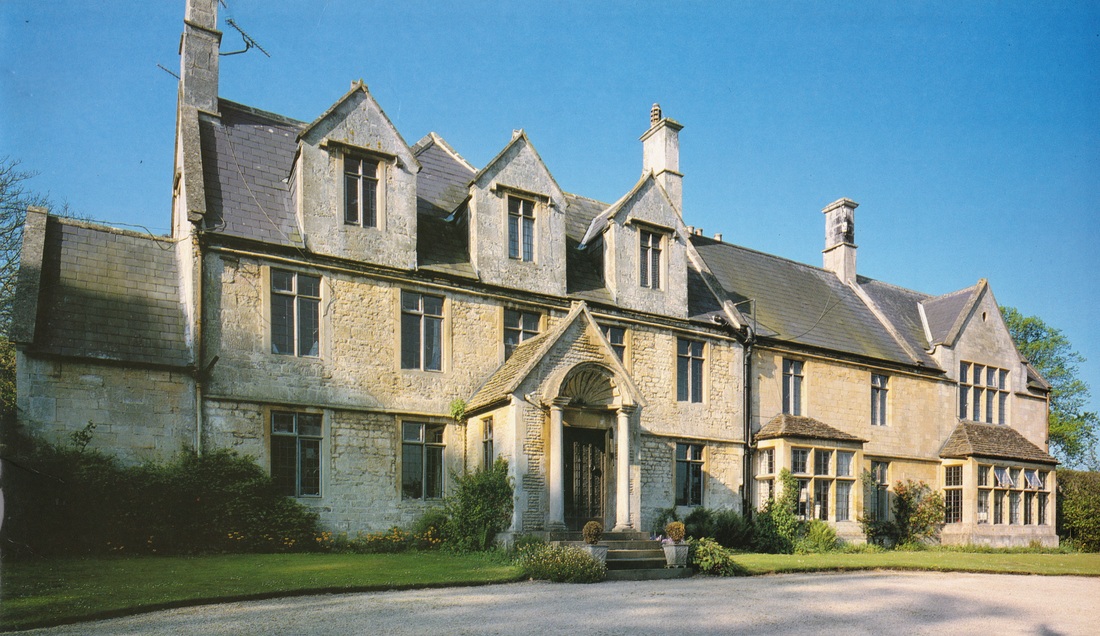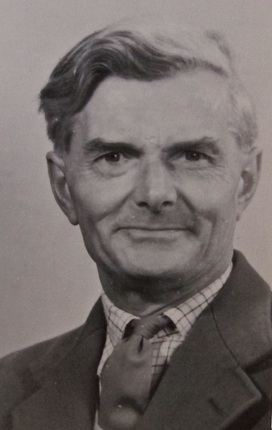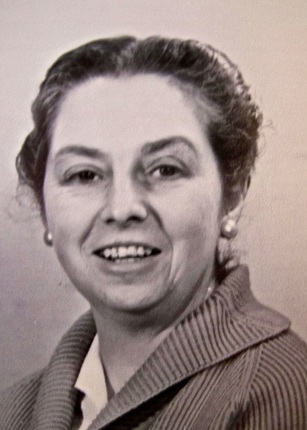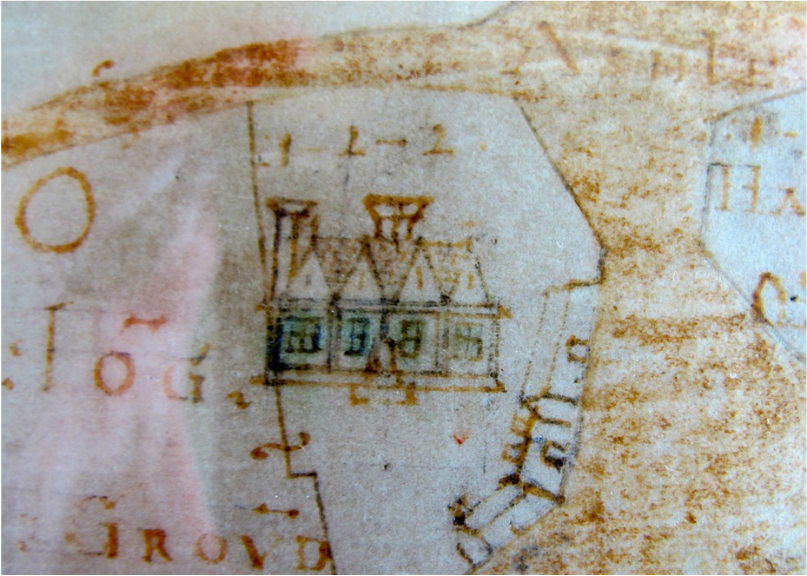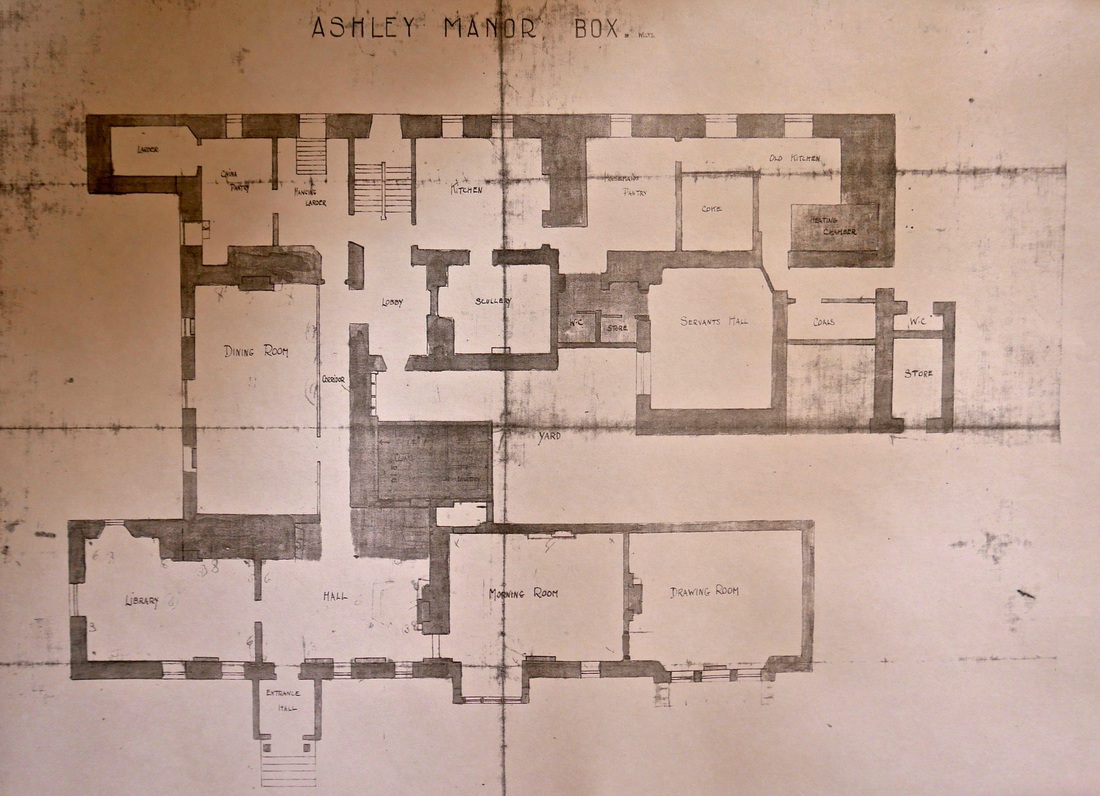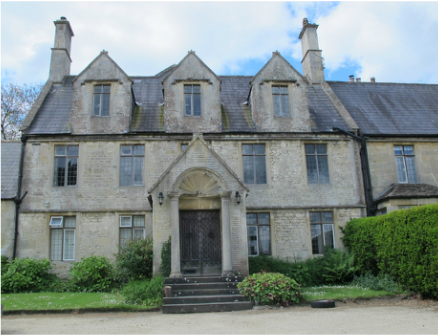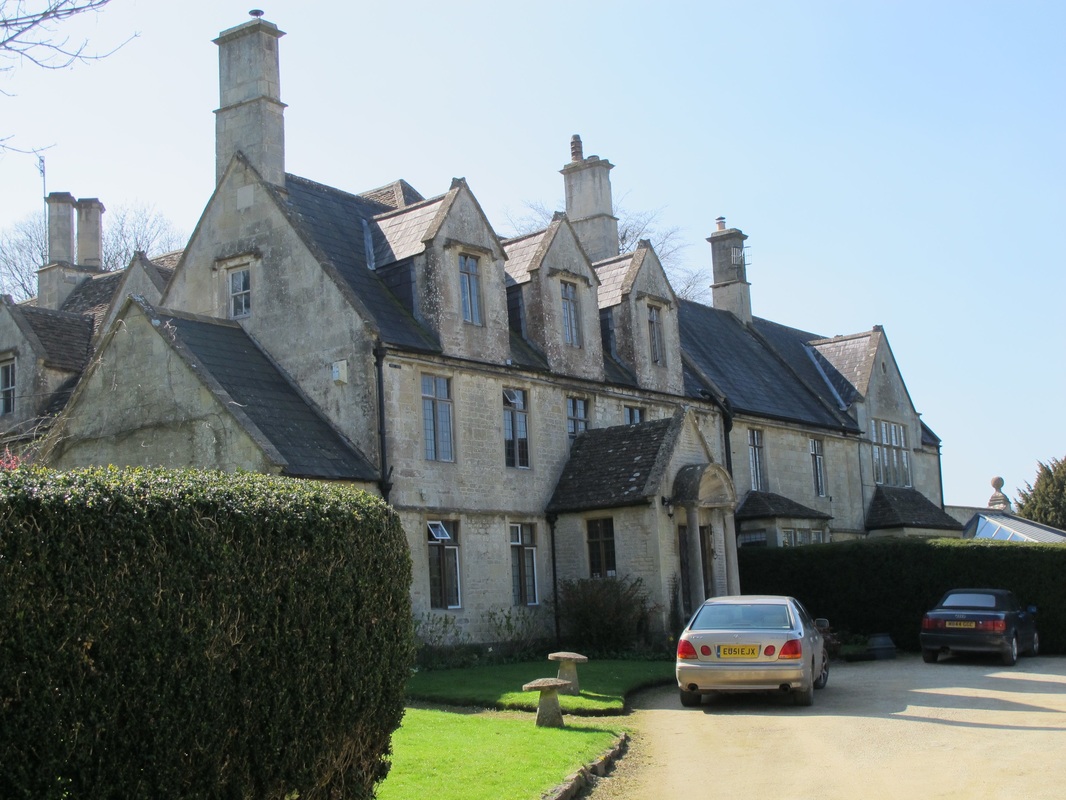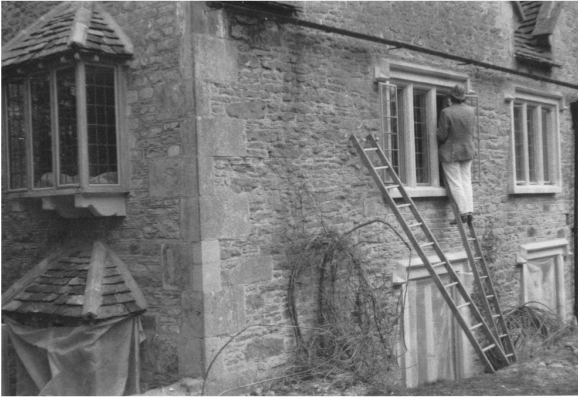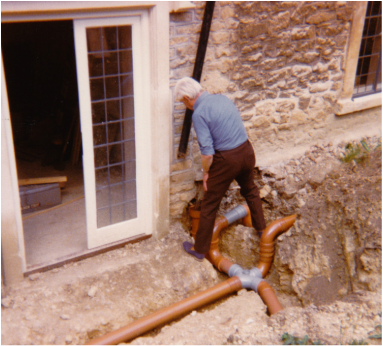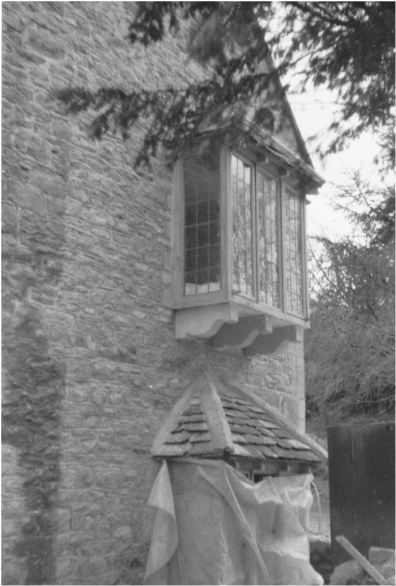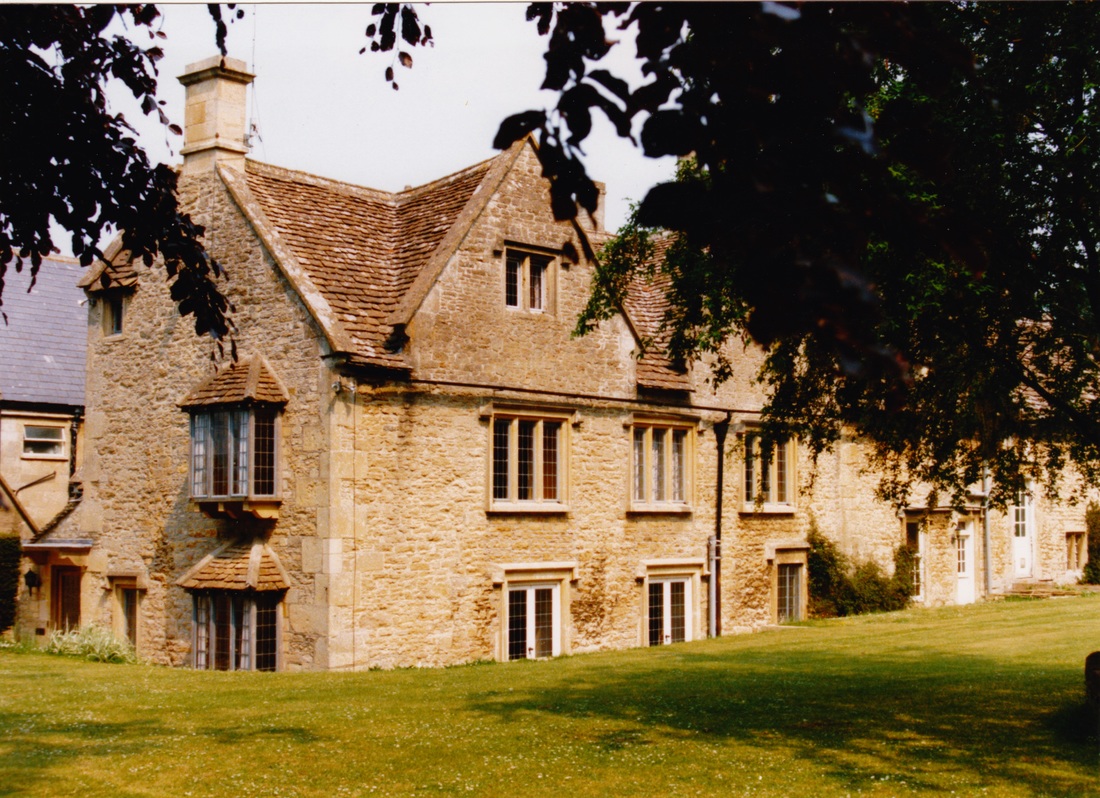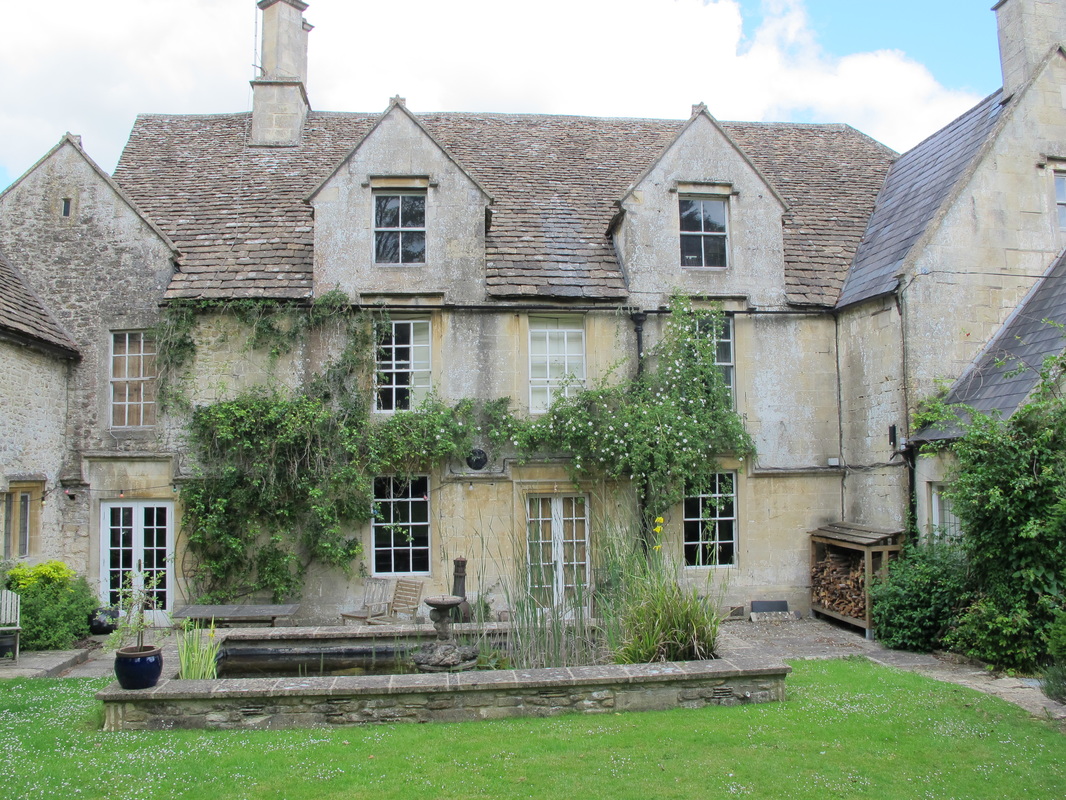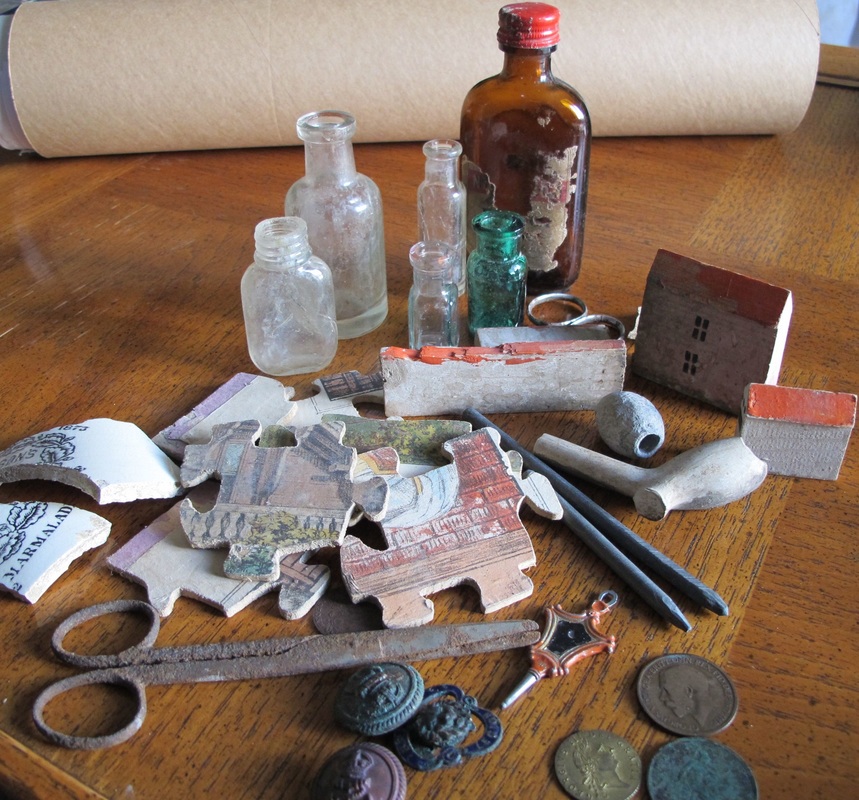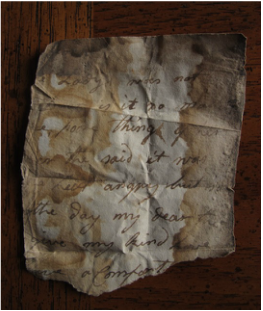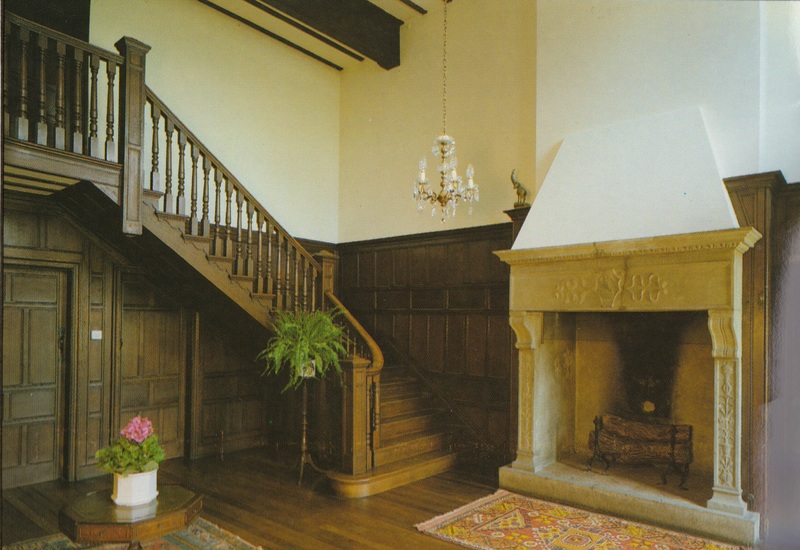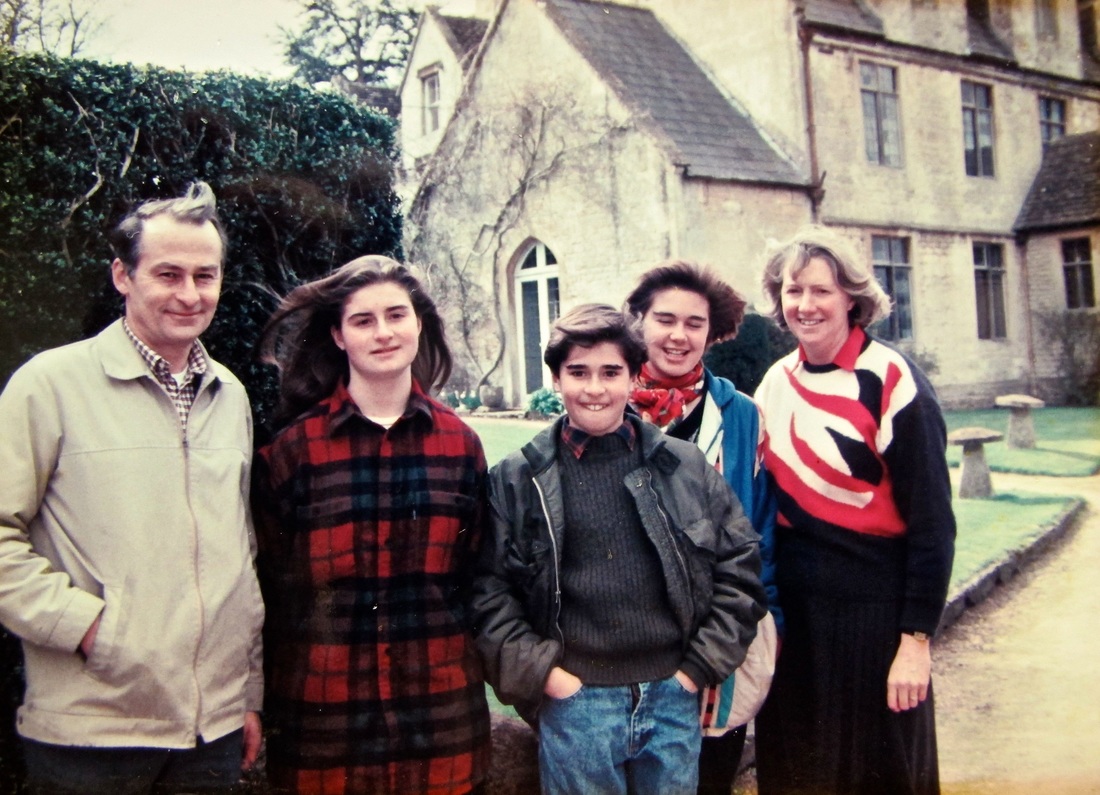|
Saving Ashley Manor, 1975-1992
Elaine and Richard Campbell July 2016 Elaine's father, Arthur Boughton, fell in love with the house when he was a veterinary surgeon in Bath in the years after 1948. It was a mysterious property hidden away in the hamlet behind austere gate pillars and it intrigued his imagination. Elaine takes up the story of when her parents decided to buy the property in 1975. |
We moved into Ashley Manor when the property came up for sale after the previous owners, Mr and Mrs Yates Owen, left Box.
My father, Arthur, and my mother, Peggy Grace Boughton, jumped at the chance to buy it. My father had visited it previously in his capacity as a vet and when Mr and Mrs Tull owned it after the Stewart family. He had fallen in love with the house and determined to buy it when it came back on the market. The house was water-tight but was rather run-down. In reality, it was too much of a project for them in view of their health and age, as well as being financially consuming. My husband Richard and I agreed to move in with my parents and to help them with the maintenance work.
My father, Arthur, and my mother, Peggy Grace Boughton, jumped at the chance to buy it. My father had visited it previously in his capacity as a vet and when Mr and Mrs Tull owned it after the Stewart family. He had fallen in love with the house and determined to buy it when it came back on the market. The house was water-tight but was rather run-down. In reality, it was too much of a project for them in view of their health and age, as well as being financially consuming. My husband Richard and I agreed to move in with my parents and to help them with the maintenance work.
Above Arthur Boughton and Peggy Grace Boughton (photos courtesy Elaine Campbell)
Development of the House
The first job we needed to do was to speak to the council about getting listed building consent for alterations we needed to make to allow two families to live in the property. In the course of doing this we were able to research the history of the house which we believe dates from about 1555. You can see from the illustration of the house in Francis Allen's map of 1626 that the original house was much smaller than the present building, probably comprising only the back rank of rooms of the existing building.
The first job we needed to do was to speak to the council about getting listed building consent for alterations we needed to make to allow two families to live in the property. In the course of doing this we were able to research the history of the house which we believe dates from about 1555. You can see from the illustration of the house in Francis Allen's map of 1626 that the original house was much smaller than the present building, probably comprising only the back rank of rooms of the existing building.
The plan below shows the development of the property where the oldest part was at the rear of the building, marked as kitchens. The scullery and servants hall were additions from the late 1700s and the library and drawing room were added later still between 1800 and 1860.
The front of the property was probably upgraded several times as new ranks were added and owners wanted to impress visitors. The lovely scallop shell detail over the porch is very rare and only a few similar examples exist in Wiltshire, see below left.
You can see the most modern extension to the property on the right of the photograph below right.
You can see the most modern extension to the property on the right of the photograph below right.
Modern uses of the House
In 1911 the house was rented as a private school for boys run by Rev Albert Victor Gregoire, rector of Ditteridge, and Thomas Tossmill Perkins, headmaster.[1] It had previously been situated at Weston Lodge, Bath. The 1912 Sale Particulars give a fascinating insight into the school, saying There is a Galvanised Iron Building, with two brick fireplaces and chimneys, used as three class rooms, which a purchaser will be required to pay for at £70 in addition to the purchase money, this presumably being tenant's improvements.[2] The school can't have been altogether bad as battleship commander, Capt FR Parham, was reported during World War 2 as having attended Weston Lodge Preparatory School, Bath, before it was moved to Ashley Manor, Box.[3]
Captain Arthur Stewart owned the house between the First and Second World Wars. He and his Italian wife had the garden terraced in an Italianate-style. They also kept numerous Pekinese dogs in the outhouses. You can read about the five first prizes she won at the Paignton Dog Show of 1934 with her dogs Bumble Bee and Pegasus and her bitch Gem.[4]
During World War 2 the whole house was appropriated by the military. Some years later a man turned up on the doorstep saying that he had lived here during his wartime service.
In 1911 the house was rented as a private school for boys run by Rev Albert Victor Gregoire, rector of Ditteridge, and Thomas Tossmill Perkins, headmaster.[1] It had previously been situated at Weston Lodge, Bath. The 1912 Sale Particulars give a fascinating insight into the school, saying There is a Galvanised Iron Building, with two brick fireplaces and chimneys, used as three class rooms, which a purchaser will be required to pay for at £70 in addition to the purchase money, this presumably being tenant's improvements.[2] The school can't have been altogether bad as battleship commander, Capt FR Parham, was reported during World War 2 as having attended Weston Lodge Preparatory School, Bath, before it was moved to Ashley Manor, Box.[3]
Captain Arthur Stewart owned the house between the First and Second World Wars. He and his Italian wife had the garden terraced in an Italianate-style. They also kept numerous Pekinese dogs in the outhouses. You can read about the five first prizes she won at the Paignton Dog Show of 1934 with her dogs Bumble Bee and Pegasus and her bitch Gem.[4]
During World War 2 the whole house was appropriated by the military. Some years later a man turned up on the doorstep saying that he had lived here during his wartime service.
Our Work
We moved into the back of the house in 1975 and started to restore the rooms, most of which had not been occupied for thirty years. Many of the walls were just rubble-built without mortar and with no footings either. It was a massive rebuilding job as you can see from the pictures below, courtesy Elaine and Richard Campbell.
We moved into the back of the house in 1975 and started to restore the rooms, most of which had not been occupied for thirty years. Many of the walls were just rubble-built without mortar and with no footings either. It was a massive rebuilding job as you can see from the pictures below, courtesy Elaine and Richard Campbell.
We lowered the ground floor level, put in new doorways for access and replaced the mullion windows before rebuilding the walls.
In the first floor we had to install beams to replace some of the old oak timbers which still had the original builder's marks on them and we installed the dormer windows seen below left (courtesy Humberts), in what was possibly the solar (medieval private rooms).
In the process of restoration we uncovered lots of little reminders of its previous history. To the rear there was an underground ice-house measuring about 10 foot by 10 foot with stone shelves for cool storage. There were steps down to it under the floor in the kitchen. After a massive amount of work the rear of the property really came together and looks as if it had always been there. From the roof-line it still clearly shows its the earlier origins (below right courtesy Elaine and Richard Campbell).
In the first floor we had to install beams to replace some of the old oak timbers which still had the original builder's marks on them and we installed the dormer windows seen below left (courtesy Humberts), in what was possibly the solar (medieval private rooms).
In the process of restoration we uncovered lots of little reminders of its previous history. To the rear there was an underground ice-house measuring about 10 foot by 10 foot with stone shelves for cool storage. There were steps down to it under the floor in the kitchen. After a massive amount of work the rear of the property really came together and looks as if it had always been there. From the roof-line it still clearly shows its the earlier origins (below right courtesy Elaine and Richard Campbell).
In 1912 the Ashley Manor Estate comprised 911 acres of land which were put up for sale by the Northey family and the Manor House itself stood in two and a half acres combined with six and a half acres called Ashley Leigh Meadow.[5] It was obviously a self-contained little estate with a well in the courtyard supplying on-site water for residents. The coach house near the present entrance has a horse-mounting stone and was part of another little complex of buildings with two stables, a tack room and two carriage rooms. It is reputed that six horses were kept there.
Finding the Past
We found many little souvenirs of past inhabitants under the floorboards including toys, jigsaw pieces, coins, gambling tokens and a British Legion badge (photos courtesy Carol Payne).
Finding the Past
We found many little souvenirs of past inhabitants under the floorboards including toys, jigsaw pieces, coins, gambling tokens and a British Legion badge (photos courtesy Carol Payne).
Happy Times
Much of our time in the house was spent working on the property but there were also very happy times with the children growing up and the belief that we were conserving the past. We let part of the house to three Bath University students and foreign students at times in the year.
Some of the happiest times were the music evenings that we put on in the main hall. Barry Rydz was a key figure in this and arranged live performances and the programme of music. Others also helped including Joy Keevil. One of the most ambitious was the performance by the Silver Ring Choir of Bath that she organised. The choir members probably numbered about forty people, far too many to be arranged as a group, so they were standing on the stairs and on the balcony. I remember their singing Goodnight Ladies, with the song gradually getting quieter.
Much of our time in the house was spent working on the property but there were also very happy times with the children growing up and the belief that we were conserving the past. We let part of the house to three Bath University students and foreign students at times in the year.
Some of the happiest times were the music evenings that we put on in the main hall. Barry Rydz was a key figure in this and arranged live performances and the programme of music. Others also helped including Joy Keevil. One of the most ambitious was the performance by the Silver Ring Choir of Bath that she organised. The choir members probably numbered about forty people, far too many to be arranged as a group, so they were standing on the stairs and on the balcony. I remember their singing Goodnight Ladies, with the song gradually getting quieter.
On one occasion our daughter, Natalie, gave a memorable speech to the assembled members recalling the story of her great grandfather, Rutland Boughton, who was a prolific twentieth century composer of classical operas and choral music, whose best-known piece is The Immortal Hour, based on Celtic mythology.
We let out some of the house as holiday lets but when the property became too big for us we divided the house into three main parts and sold each one to three different families in 1992. We had to move out of the area for three years until we were fortunate enough to buy a property in the grounds of Ashley Manor. This was Lyndale Lodge which had previously been occupied by
Mr Marriott of Bath and we moved into the house as our retirement home.
Mr Marriott of Bath and we moved into the house as our retirement home.
Over the years guests and visitors have recorded three different ghosts walking in the house, all with precise descriptions and the potential to be identified to historic figures. There are as many unexplained anecdotes surrounding Ashley Manor gardens as there are of the house. Reputedly monks had an apple orchard there and the house was given to the mother of one of Henry VIII’s wives. Sadly we have never been able to prove this or find more details. Perhaps these mysteries of the house will never be fully explained.
|
We have never seen any of them and our memory of the house is of a friendly family home with Christmas parties and family gatherings. My mother was chair of the South-West NCT (National Childbirth Trust) and we held events in the hall with 100 people crammed indoors and fetes in the garden with 500 outside. There were ante-natal classes, and tea parties for mothers and babies.
One event in the early years was attended by Mr Cameron of the Bristol balloon manufacturers. I seem to recall that we put a candle on a small cake with a mini-balloon on top which rose up into the air. And in the garden outside was a full-size hot air balloon. I suppose that the measure of our success in restoring the house was that we brought back life into Ashley Manor. |
References
[1] See Ashley Part 2
[2] See Northey Sale Particulars
[3] Bath Weekly Chronicle & Herald, 18 September 1948
[4] See Ashley Part 2
[5] See Northey Sale Particulars
[1] See Ashley Part 2
[2] See Northey Sale Particulars
[3] Bath Weekly Chronicle & Herald, 18 September 1948
[4] See Ashley Part 2
[5] See Northey Sale Particulars
